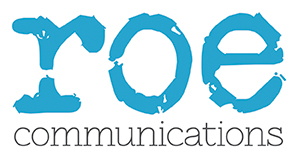When business schools first approach us about PR, they often have a specific project in mind.
A typical conversation might go like this:
- “We are holding an event next month – can you help us get some media coverage?”
- “It’s our 50th anniversary next year; we want to get some press mentions.”
- “We’ve been given a big gift by a benefactor – can you issue a press release?”
But when we ask WHY they want to publicise this event, the answer is often much vaguer.
- “Because we think we ought to be in the media.”
- “Because this is a special project for the Dean.”
- “Because it’s a big deal for the school.”
Whilst these are all perfectly understandable internal motives, they don’t really explain what you want to achieve – and why.
Instead of leaping straight into implementation, having clear PR objectives will ensure that you don’t waste time and money on activities that won’t bring ROI for your business school.
1. To support your wider organisational goals
In order to be effective, you need to align your PR with the strategic goals of the business school. Importantly, you should consider the things that matter most to your senior leadership – such as revenue or student recruitment goals.
If you are looking at your business school strategy, here are some things you might ask:
- What are your commercial objectives over the next 5-10 years?
- What challenges and opportunities does the business school have?
- What is the plan for student recruitment, financial growth or expansion into new markets?
- What do you want to be known for?
- Who are your target audiences (and who are the priorities)?
- How are you different to other schools?
Without having clear PR objectives from the outset, you will not be able to show how your campaign contributes to your school’s growth overall.
And it might make you re-assess whether to put time and money into the campaign at all. Would you be better off pursuing a different media story?
2. To help you build a strategy
Put plainly, PR strategy is HOW you reach your objectives.
Note: this is not the same as tactics, which are the specific tools you use.
PR objectives should be specific, measurable, achievable, realistic and timely (SMART).
And they should include a call to action – what do you want your audiences to think, feel or do as a result of this campaign?
For example, if a business school wanted to increase the number of applications to its MBA programme, some clear PR objectives might be:
- To increase awareness of your MBA programme from 10% to 100% amongst influential business education journalists within the next two months.
And a PR strategy that supports this objective might read:
- Focus on those media outlets that have an interest in business education
- Prioritise stories about the MBA above other areas of the school
- Push for in-depth, quality press coverage rather than the odd brand mention
- Push student and alumni stories to the fore.
3. To give your team a shared direction
Having a shared purpose and direction means that everyone knows and buys into what you are doing and why.
You can prioritise the activities most likely to achieve those objectives.
This means wasting less time and resources on things that won’t make an impact.
When you want more media coverage, it’s easy to say yes to every PR story. With clear objectives, you don’t have to do that.
So many business school communications teams get de-railed by non-urgent requests or feel obliged to support people internally.
By having clear PR objectives, the team responsible for media relations has more agency.
So, when faculty or programme heads ask for something that is outside the campaign’s remit, it is easier to say no, or at least, not right now.
4. To track results and progress
This one sounds obvious, but when you set clear, specific objectives it’s easier to measure and report back on your successes.
In years gone by, people used to believe that PR was tricky to measure compared to other marketing disciplines. With the growth in digital media, this is no longer the case.
It is now possible to analyse your press coverage in multiple ways. This ranges from the total number of times people who view a piece of press coverage to the number of times they share it on social media.
You can also measure how your earned media benefits your overall marketing objectives, such as increasing social media engagement and website traffic.
These metrics can show how you are making an impact AND help you adjust and refine your programme as you progress.
Helping you agree clear PR objectives is a core step in our Kick Start Your PR programme, designed for business schools who want to get more international press coverage.
If that sounds like you, click here for more details.

